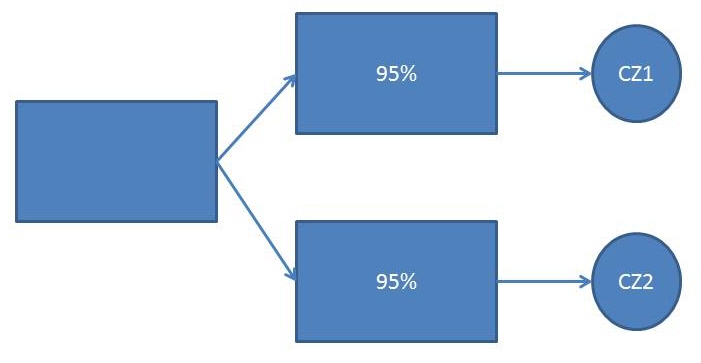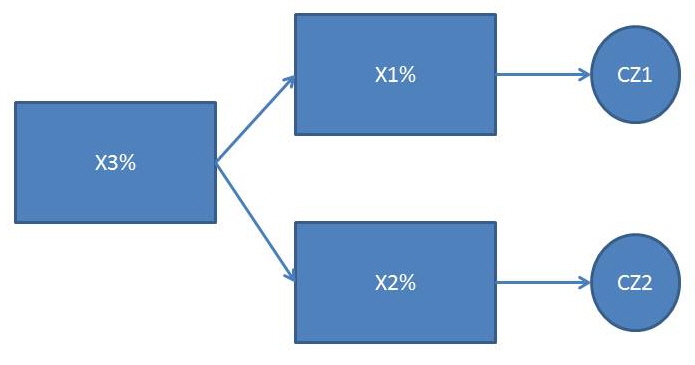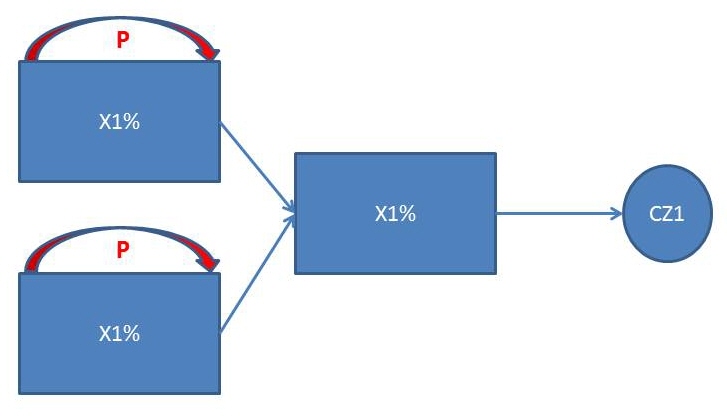Service level propagation
The following cases illustrate how the service level is propagated based on the target service levels at various facilities in the network.
Case 1: No Target Service Level
If no target service level is specified in the network, customer-facing facilities are assumed to have 95% target service level.
Service levels are then propagated to upstream facilities.

Case 2: Downstream Facilities all have same Service Level
If each downstream site has the same target service level, the upstream site’s target service level is set equal to the downstream site’s service level.

Case 3: Downstream Facilities have different Service Levels
If each downstream site has a different target service level, the target service levels are propagated from downstream to upstream facilities by taking into account a weight factor coming from each site-product combination.
The weight factor is determined by demand mean of each downstream site:


Case 4: BOMs with Component Products
When a BOM is used that includes component products, if the component products do not have a target service level defined, the component’s target service level is set equal to finished good’s target service level.

Last modified: Wednesday May 15, 2024
